Relocating is a hassle and having a lot of heavy furniture to carry can make it even more inconvenient. You might think of relocating every piece of furniture by yourself if you don’t want to bother your friends and family by requesting assistance. To accomplish this securely, clear a passage by making sure nothing stands in your path, move heavy furniture by yourself using furniture rolls or presentations, and build an access ramp to your vehicle.

1. Assess and make a plan
Being as effective as feasible is the aim while transferring large, heavy furniture. Determine what needs to be carried when and where by making a list of every significant item that has to fit onto the moving vehicle. To help balance the load and ensure the safety of all your goods, large items should generally be placed towards the rear of the truck bed along the edges. This implies that you will probably start off executing the bulk of the work and then fill in the spaces with lighter furniture pieces and light containers.
Sort the furniture into priority order, keeping in mind that the largest and largest pieces should be tackled first. Making a plan of action will save you the trouble and expense of having to subsequently move all that heavy furniture on the truck, yet it might seem like just one more thing to do on an infinite list of tasks.
2. Take out any excess weight that is inside or on top of the furniture
Remove all of the drawers from a desk or cabinet before transferring it. Put any trinkets or decorative objects that are resting on top of your furniture in a box or somewhere else out of their way.
3. To keep your walls and fragile furniture safe, cover them with a blanket
Use a gentle blanket to wrap around the perimeter and corners of any old or highly damaged furniture you may have. In order to avoid damaging the wall, it’s also a good idea if the piece has sharp edges. Ensure that it covers every important component of your furniture that can be scratched up during the move.
4. Get Help
This one should go without saying: moving a sofa, sideboard, or dining table by yourself requires four hands and a pair of feet. However, it is the purpose of family and friends. It should be your top objective to include at least one person with able hands in the preparations. More muscle is preferable. Select your assistants based on their habits and temperament as well as their strengths. Look for a person who can take a beating without losing their cool.
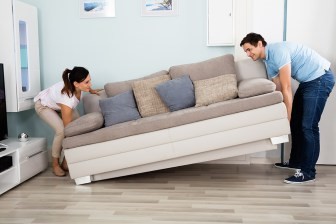
5. Instead of lifting with your back, use your legs
When lifting, maintain a straight back and flex at the knees to ensure good form. Align your feet in the direction of the furniture. Lift the furniture up by slowly straightening your legs and contracting your core muscles. To prevent injuries, do not rotate or bend the upper part of your body while moving the furniture.
6. Disassemble the large items
When feasible, disassemble large, heavy furniture components to reduce the weight on your shoulders and facilitate moving the item up and down stairs and around curves. Desk legs should be taken off of dining and kitchen tables and wrapped individually for safe transportation.
Before being moved, beds should be disassembled into their component pieces. Take off your footboard and headboard from the structure of your bed. After that, dismantle the frame by taking out the sidebars and panels. Because mattresses are heavy and huge, moving them can be challenging. Although somewhat lighter, box springs still pose difficulties because of their rigidity. Take special care to record the location of screws, nuts, bolts, brackets of some kind, and various other hardware when dismantling furniture. Sort hardware according to item and place it in boxes or containers with labels. Don’t just stuff them all into a single bag and forget about it. Reassembling your furniture will take longer if you have to spend time selecting bolts, which can be a pain.
7. Load very carefully
It’s critical to employ safe loading methods if your heavy furniture will be relocated from your house to another site. To make loading simpler, your moving vehicle should ideally include a lift or ramp for loading.
Your furniture may be more at risk from a nearly empty vehicle than from a fully loaded one. If they are firmly secured or jammed on other furniture, items are prone to moving, sliding, and dropping. While some moving trucks have fixed loops to which you must affix your own buckles, others simply have built-in moving straps. Thus, keep a few additional straps handy. You never know what you’re going to receive when you hire a truck.
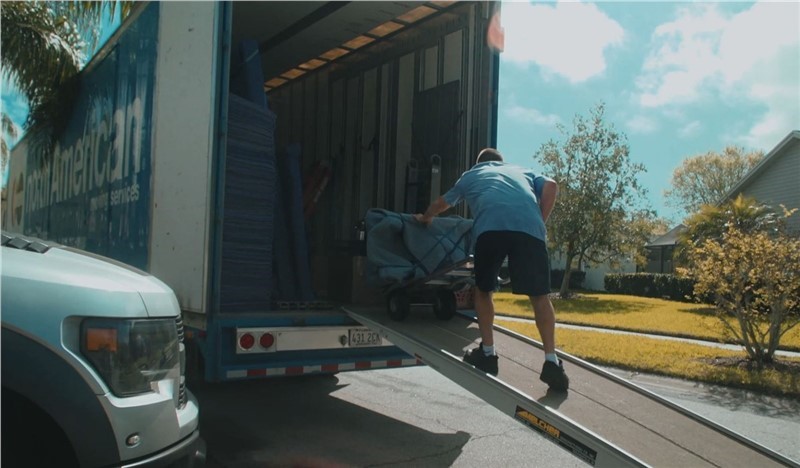
8. Apply tried-and-true methods
Your own security and the safety of your assistance should be your top priorities when carrying out a large furniture transfer. Although there is a chance of harm when moving furnishings, this risk can be reduced with thoughtful preparation.
9. Follow the Buddy System
Do not be afraid to ask for assistance if you are having trouble moving furniture on your own. After all, attempting to move large objects on your own without help might lead to accidents. Try to get some friends or neighbours to lend you a helping hand. Plan to move the very heavy items gathered and set them away. Ultimately, proceed cautiously and avoid exceeding your personal boundaries. You’re not going to win any prizes for pushing through it all by yourself.
10. Make an unloading strategy as well
Until everything in your new home is not only unloaded from the moving vehicle but also placed in its proper location, you are not considered to be done. Because of this, just as you planned and prioritized how you were going to remove everything from your previous house, so too should you prepare and prioritize how you are going to unload everything. In this manner, you spare yourself the headache of having to transfer bulky furniture once it’s inside your house from the truck. Yet, you can begin reassembling each piece of furniture after everything has been unloaded to conserve time.


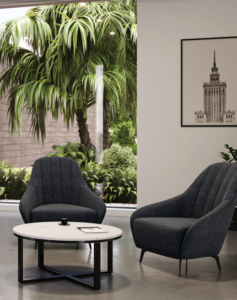

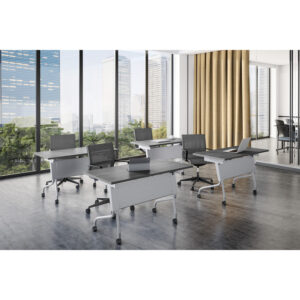
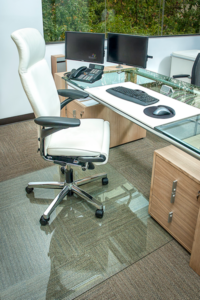

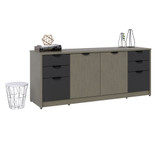


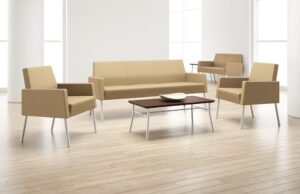
666 Responses
Thank you for the auspicious writeup. It in fact was a amusement account it. Look advanced to more added agreeable from you! By the way, how could we communicate?
This webpage is unbelievable. The brilliant data reveals the distributer’s interest. I’m awestruck and expect further such astonishing entries.
https://lioleo.edu.vn/christmas-section/4.png.php?id=bet-on-nba
Sacar dinheiro na [9d bet](https://9d-bet-br.com) nunca foi tão fácil! Com a verificação de poucos dados, como sua conta bancária ou e-wallet, você pode retirar seus fundos rapidamente. A plataforma oferece total segurança no processo, garantindo que seus dados estejam protegidos com criptografia.
Na [bkbet](https://bk-bet-com.com), você encontra jogos justos e bônus generosos para suas apostas favoritas!
A pixbet tem uma oferta incrível para novos jogadores! Ao se registrar na plataforma, você recebe US$ 100 de bônus para usar como preferir. Experimente os jogos mais emocionantes do cassino e descubra novas formas de ganhar. A hora de começar sua jornada é agora!
https://lioleo.edu.vn/dang-ky-form/4.png.php?id=alexis-bet
Aproveite o bônus de boas-vindas de US$ 100 da [7gamesbet](https://7gamesbet-br.com)! Ao se registrar como novo usuário, você pode usar esse valor para explorar os mais populares jogos de cassino. Não deixe passar a chance de começar sua jornada de apostas com uma vantagem extra de US$ 100!
24 horas de atendimento na [umbet](https://um-bet-br.com): Resolvemos suas questões a qualquer hora do dia ou da noite.
A pixbet é um cassino online de confiança, com jogos populares e uma plataforma justa para todos os jogadores. E para deixar sua experiência ainda mais incrível, a plataforma oferece bônus vantajosos que aumentam suas chances de ganhar e fazem a diversão durar mais tempo.
Na [lobo888](https://www.lobo888-br.com), o Suporte ao Cliente Está Sempre ao Seu Lado, 24 Horas por Dia, 7 Dias por Semana!
การลงทะเบียนและเข้าสู่ระบบที่ [url=https://ufa-778.com]ufa[/url] เป็นขั้นตอนที่ง่ายและรวดเร็ว ผู้เล่นสามารถเริ่มต้นได้ทันที พร้อมทั้งรับโบนัสพิเศษเพื่อเพิ่มโอกาสในการชนะในเกมต่างๆ ที่ [url=https://ufa-778.com]ufa[/url] มีให้บริการ
Na [betcris](https://betcris-br.com), Jogos Populares de Azar e Bônus Irresistíveis Te Esperam – Venha Conferir!
Always Available: betshah – https://betshah-in.com’s 24/7 Customer Service for Instant Support
[url=https://nasa-th.com]nasa[/url] สนุกกับเกมพนันและรับโบนัสตอบแทนที่คุ้มค่าที่สุด
Aprenda Como Baixar o Aplicativo [poker online](https://pokeronline-br.com) e Desfrute da Melhor Experiência de Cassino em Seu Celular
แพลตฟอร์ม [url=https://lotto-778.com]lotto[/url] รับประกันว่าผู้เล่นสามารถติดต่อสอบถามหรือขอความช่วยเหลือได้ทุกเวลา โดยไม่ต้องกังวลว่าจะพลาดการตอบกลับ ทีมบริการลูกค้าจะทำการตรวจสอบและแก้ไขข้อสงสัยของผู้เล่นอย่างรวดเร็วที่สุด ทุกปัญหาจะได้รับการแก้ไขอย่างมืออาชีพและตรงจุด ด้วยการให้บริการที่เป็นมาตรฐานระดับสากล ผู้เล่นสามารถมั่นใจได้ว่าเงินทุนและข้อมูลส่วนตัวของตนจะได้รับการดูแลอย่างปลอดภัยทุกครั้งที่ใช้บริการ
Claim a $100 Bonus Instantly When You Register at puma – https://puma-in.com!
ใช้แอป kc98 – https://qyw81.com เพื่อเดิมพันการแข่งขัน Pokémon Unite และ Splatoon 3 พร้อมตัวเลือกเดิมพันแบบแฟนตาซีลีก
I never thought about this topic in this way before. Your post gave me a new perspective!
This was very useful! I’ll be bookmarking this for future reference.
ติดตั้งแอป rm668 – https://ejha4.com แล้วรับสิทธิ์พิเศษเข้าร่วมเดิมพันเกมแข่งรถอย่าง Gran Turismo และ Forza Horizon ด้วยอัตราต่อรองที่ดีที่สุด
Win Big on Popular Casino Games with Fair Play and Incredible Bonuses at shazam – https://shazam-ph.com
ขั้นตอนสมัคร mm88 – https://mm88-th.com และรับสิทธิ์โบนัส 100$ สำหรับผู้เล่นใหม่
sun – https://sun-vn.com – Đăng Ký Nhanh, Nhận Ngay 100$
Rút Tiền kubet – https://kubet-vn.com Nhanh Trong Ngày – Bảo Mật Tuyệt Đối
พบกับการอัปเดตใหม่ของแอป rm68 – https://rm68-th.com ที่ช่วยให้คุณเดิมพันเกม Battle Royale อย่าง Warzone และ PUBG ได้ง่ายขึ้นกว่าเดิม พร้อมระบบเดิมพันแบบเรียลไทม์ที่ช่วยให้คุณทำกำไรได้มากขึ้น
You really make it seem so easy with your presentation but I find this matter to be actually something
which I think I would never understand. It seems too complicated
and very broad for me. I’m looking forward for your next post, I will
try to get the hang of it!
I’m no longer positive where you’re getting your information, but
great topic. I must spend some time finding out much more or understanding more.
Thanks for magnificent information I was looking for this information for my mission.
Cadastre-se no [ggbet](https://ggbet-88.com) e Ganhe 100$ de Bônus de Boas-Vindas!
Saque Simples e Seguro no dobrowin: Retire Seus Ganhos de Forma Ágil!
24/7 Expert Support at daddy: Get Your Issues Resolved Anytime
fun88 ลงทะเบียนผู้ใช้ใหม่ รับโบนัส 100$ ทันที
Jogue na betleao e Explore Jogos Populares de Azar Com Bônus Que Tornam Sua Experiência Melhor
Pretty section of content. I just stumbled upon your web site and in accession capital to assert that I
acquire in fact enjoyed account your blog posts.
Any way I’ll be subscribing to your feeds and even I achievement
you access consistently fast.
you’re truly a excellent webmaster. The web
site loading velocity is amazing. It sort of feels that you’re doing any distinctive trick.
Also, The contents are masterwork. you have done a excellent task on this subject!
w69com – https://ghwv0.com ปรับปรุงฟังก์ชันแอปใหม่ ใช้งานง่ายกว่าเดิม สนุกกับคาสิโนสดและเกมสล็อตได้ทุกที่ทุกเวลา
ดาวน์โหลดแอป w69 betวันนี้ รับโปรโมชั่นพิเศษมากมาย ใช้งานสะดวก ปลอดภัย และรองรับทุกอุปกรณ์
ดาวน์โหลดแอป h68 วันนี้ รับโปรโมชั่นพิเศษมากมาย ใช้งานสะดวก ปลอดภัย และรองรับทุกอุปกรณ์
ติดตั้งแอป ทดลองเล่น
สล็อต w69 – https://jrz04.com อย่างรวดเร็ว รองรับทั้ง
iOS และ Android สัมผัสประสบการณ์เดิมพันที่ลื่นไหลและสะดวกสบายกว่าเดิม
Download the teen patti – https://teen-patti-in.com App for a Better, Faster, and More Engaging Mobile Gaming Experience
w69 ทางเข้า – https://rwho3.com อัปเกรดระบบเกมใหม่ ให้คุณเล่นได้อย่างเสถียร ไม่มีสะดุด พร้อมโบนัสพิเศษสำหรับผู้ใช้แอป
Como Retirar Seus Ganhos do [166bet](https://166-bet-br.com) Com Segurança? Passo a Passo para um Saque Rápido!
เล่นสล็อตแนว Adventure กับธีม Tomb Raider และ Uncharted ได้ที่แอป www w69 – https://tsc97.com พร้อมโบนัสหมุนฟรีสำหรับสมาชิกใหม่ ออกล่าสมบัติและสะสมรางวัลใหญ่ไปกับการผจญภัยที่ไม่มีที่สิ้นสุด
Ganhe 100$ ao se Registrar no mesk bet e Aposte de Forma Fácil!
Đăng Nhập oxbet Nhanh
– Trải Nghiệm Ngay Không Gián Đoạn
w69 ทางเข้า ปรับแต่งอินเทอร์เฟซแอปใหม่ ดีไซน์สวยงาม ค้นหาง่าย และใช้งานได้สะดวกกว่าเดิม
http://site2.aesa.pb.gov.br/aesa/Lifestyle/?id=55k-bet
http://hornoscasaemilio-valoriani.com/br/index.php?id=an777-bet
jutawan-bet
tamu-bet
https://gvis.tramandai.rs.gov.br/web-console/Tech/?id=pg-bet
asian-bet
http://hornoscasaemilio-valoriani.com/br/index.php?id=jepang-bet
azka-bet
http://mail.crn-nieruchomosci.pl/br/index.php?id=rejeki-bet
wongso-bet
https://gvis.tramandai.rs.gov.br/web-console/Cities/?id=studio-bet-87
http://hornoscasaemilio-valoriani.com/br/index.php?id=s78-bet
apa-itu-bet
สนุกกับการเดิมพันผ่านแอป w69 slot ทาง เข้า ที่รองรับการใช้งานแบบ Multi-Device เล่นได้ทุกแพลตฟอร์ม
w69 slot ทางเข้า พัฒนาแอปให้รองรับเกมมากขึ้น มีตัวเลือกหลากหลายให้คุณเดิมพันได้อย่างอิสระ
http://pizzaescuelavaloriani.com/br/index.php?id=jaya-bet
อัปเกรดแอป p688 – https://lga92.com วันนี้ เพื่อการเล่นเกมที่ราบรื่นกว่าเดิม พร้อมฟังก์ชันใหม่ที่ช่วยให้คุณสนุกยิ่งขึ้น
http://sila-zerna.com/br/index.php?id=h5-rp777-bet
bet-satu-slot
http://mail.crn-nieruchomosci.pl/br/index.php?id=angka-bet
http://magdalenahoffmann.com/br/index.php?id=cendana-bet
ดาวน์โหลดแอป w69 com ง่ายๆ
เพียงไม่กี่คลิก สนุกกับการเดิมพันกีฬา คาสิโน
และสล็อตในที่เดียว
http://site2.aesa.pb.gov.br/aesa/Sports/?id=76k-bet-login
ดาวน์โหลดแอป w69 bet – https://mebd6.com วันนี้ รับโปรโมชั่นพิเศษมากมาย ใช้งานสะดวก ปลอดภัย และรองรับทุกอุปกรณ์
http://hydraulik-tuchola.pl/br/index.php?id=bet-365-ar
Woah! I’m really loving the template/theme of this site. It’s simple, yet effective. A lot of times it’s very difficult to get that “perfect balance” between usability and visual appeal. I must say you have done a very good job with this. Additionally, the blog loads very quick for me on Chrome. Exceptional Blog!
I like what you guys are up too. This kind of clever work and exposure! Keep up the very good works guys I’ve included you guys to my personal blogroll.
I’ve been surfing online more than 3 hours today, yet I never found any interesting article like yours. It is pretty worth enough for me. Personally, if all web owners and bloggers made good content as you did, the net will be a lot more useful than ever before.
Howdy! Someone in my Facebook group shared this website with us so I came to take a look. I’m definitely enjoying the information. I’m bookmarking and will be tweeting this to my followers! Outstanding blog and great design.
Bônus de 100$ no bet 4 – https://bet-4-br.com: Faça Seu Cadastro Agora
Mesmo!
It’s very easy to find out any matter on net as compared to textbooks, as I found this paragraph at this web site.
Greetings from Carolina! I’m bored to death at work so I decided to browse your website on my iphone during lunch break. I enjoy the knowledge you provide here and can’t wait to take a look when I get home. I’m shocked at how quick your blog loaded on my phone .. I’m not even using WIFI, just 3G .. Anyways, good blog!
Aposte com 100$ de Bônus no esportenet – Cadastre-se e Aproveite!
Seu Bônus de 100$ Espera por Você no dobrowin –
Cadastre-se Agora!
Bônus de 100$ para Novos Usuários: Cadastre-se no betsury – https://betsury-br.com Hoje!
Aposte com 100$ de Bônus no pinup bet (pinupbet-br.com) – Cadastre-se e Aproveite!
Comece no flames (https://flames-br.com) com 100$
de Bônus de Boas-Vindas!
Ganhe 100$ de Bônus no esportebet ao Criar Sua Conta!
Receba 100$ de Bônus no misterjackbet e Comece
a Apostar Agora!
Bônus de 100$ para Novos Usuários: Cadastre-se no mrbetjack-br.com
– https://mrbetjack-br.com Hoje!
Faça Seu Registro no cbet – https://cbet-br.com e Ganhe
100$ de Bônus Exclusivo!
Aposte no bwin – https://bwin-br.com: Cadastre-se e Receba 100$ de Bônus
Imediato!
If you’re looking for a top-notch online casino experience, vvjl slot
has you covered. New users can claim a $100 bonus upon registration, giving you the chance to enjoy
a variety of games with extra funds. Whether you prefer slots, roulette, or live blackjack, your bonus will enhance
your playing experience. Don’t miss out on this amazing offer—sign up now to claim your $100
bonus and start playing today!
Start Playing at 24bet with a $100 Bonus for New
Users!
Start your journey at buumi with an exclusive $100 bonus!
New users can instantly claim this offer when they register, giving them a
head start on exploring the diverse range of online casino games, slots, and sports betting options available.
Don’t miss out on this exciting opportunity—sign up today
and take advantage of this amazing $100 bonus
to boost your chances of winning big!
Looking for an online casino with exciting rewards? At tsars, new users can enjoy a $100 bonus
just for registering! With this bonus, you’ll be able
to explore a wide range of games, including slots, poker,
blackjack, and more. Don’t miss out on this
exclusive offer—sign up now and claim your $100 bonus to get
your gaming experience off to a fantastic start!
How to Log In and Claim Your $100 Bonus at netbet
Ready to win big at leon?
New users can claim a $100 bonus upon registration, giving you the perfect opportunity to
explore a variety of exciting games, from slots to live casino tables.
Don’t miss out on this exclusive offer—sign up today
and claim your $100 bonus to get started on your winning journey!
Cadastre-se no bet77 e Ganhe
100$ de Bônus de Boas-Vindas!
O bet 7k oferece uma excelente oportunidade para quem deseja começar sua
experiência no cassino online com um bônus
de 100$ para novos jogadores! Ao se registrar no site, você garante esse bônus exclusivo que pode ser utilizado em
diversos jogos de cassino, como slots, roleta e poker.
Esse é o momento perfeito para explorar o mundo das apostas com um
saldo extra, aproveitando ao máximo suas apostas sem precisar
investir um grande valor logo de início. Não perca essa oportunidade e cadastre-se já!
Ao se cadastrar no 73 bet, você ganha um bônus de 100$ para começar sua jornada no
cassino com o pé direito! Não importa se você é um novato ou um apostador experiente,
o bônus de boas-vindas é a oportunidade perfeita para explorar todas as opções
que o site tem a oferecer. Jogue seus jogos favoritos, descubra novas opções de apostas e aproveite
para testar estratégias sem risco, já que o bônus ajuda a aumentar suas chances de ganhar.
Cadastre-se hoje e comece com 100$!
9k bet: Comece com 100$ de Bônus ao Criar Sua Conta!
Receba 100$ de Bônus no 7kbet e Comece a Apostar Agora!
Faça Seu Registro no fbbet – https://fb-bet-br.com e
Ganhe 100$ de Bônus Exclusivo!
Registre-se e Receba 100$ de Bônus no winbra para Apostar!
O luck 2 oferece uma excelente oportunidade para quem deseja começar sua experiência
no cassino online com um bônus de 100$ para novos jogadores!
Ao se registrar no site, você garante esse bônus exclusivo que
pode ser utilizado em diversos jogos de cassino, como slots, roleta e
poker. Esse é o momento perfeito para explorar o mundo das apostas com um saldo extra,
aproveitando ao máximo suas apostas sem precisar investir um grande valor logo
de início. Não perca essa oportunidade e cadastre-se já!
No onabet,
novos usuários podem aproveitar um bônus de 100$ ao se registrar no site!
Isso significa mais chances de ganhar e explorar uma grande variedade de jogos de
cassino, desde slots emocionantes até clássicos como roleta e blackjack.
Com o bônus de boas-vindas, você começa com um saldo extra, o que aumenta suas chances de sucesso.
Cadastre-se agora e use os 100$ de bônus para experimentar seus jogos favoritos com mais facilidade.
Aproveite a oferta e comece sua aventura no cassino agora mesmo!
Cadastre-se no dj bet e Ganhe 100$ de Bônus de Boas-Vindas!
Novo no john bet? Ganhe 100$ de
Bônus Ao Se Registrar!
O h2bet oferece uma excelente oportunidade
para quem deseja começar sua experiência no cassino
online com um bônus de 100$ para novos jogadores!
Ao se registrar no site, você garante esse bônus exclusivo que pode ser utilizado em diversos jogos de cassino, como slots, roleta e poker.
Esse é o momento perfeito para explorar o mundo das apostas com um saldo extra,
aproveitando ao máximo suas apostas sem precisar investir um grande
valor logo de início. Não perca essa oportunidade e cadastre-se já!
Cadastre-se no 136bet – https://136-bet-br.com e Receba 100$ para Apostar
em Seus Jogos Favoritos!
O dobrowin oferece uma excelente oportunidade
para quem deseja começar sua experiência no cassino online com um bônus de 100$
para novos jogadores! Ao se registrar no site, você garante esse bônus exclusivo que
pode ser utilizado em diversos jogos de cassino, como slots,
roleta e poker. Esse é o momento perfeito para explorar o mundo
das apostas com um saldo extra, aproveitando ao máximo suas apostas sem precisar investir um grande valor logo de início.
Não perca essa oportunidade e cadastre-se já!
Registre-se no juntosbet – https://www.juntosbet-br.com e Comece a Apostar com 100$ de Bônus!
Hướng Dẫn Gửi Tài Liệu Xác Minh Để Rút Tiền Tại lode88
Excellent post. Keep writing such kind of info on your site. Im really impressed by it.
100$ de Bônus para Apostar no bet nacional!
Cadastre-se Agora!
constantly i used to read smaller articles which as well clear their motive, and that is also happening with this article which I am reading here.
Everyone loves it whenever people get together and share thoughts. Great website, keep it up!
Ganhe 100$ de Bônus no esport bet ao Criar Sua Conta!
Faça seu Cadastro no bingo – https://bingo-br.com e Ganhe
100$ para Começar a Jogar!
O blackjack online – blackjackonline-br.com – oferece uma excelente oportunidade para
quem deseja começar sua experiência no cassino online com um bônus de 100$
para novos jogadores! Ao se registrar no site, você garante esse bônus exclusivo que pode ser utilizado em diversos jogos de cassino, como slots, roleta e poker.
Esse é o momento perfeito para explorar o mundo das apostas com um saldo extra, aproveitando ao máximo
suas apostas sem precisar investir um grande valor logo de início.
Não perca essa oportunidade e cadastre-se já!
Ganhe 100$ no realbet – https://realbet-br.com ao Se Registrar – Comece a Apostar Agora!
O pague bet oferece uma excelente oportunidade para quem
deseja começar sua experiência no cassino online com um bônus de 100$ para novos jogadores!
Ao se registrar no site, você garante esse bônus exclusivo que pode ser utilizado em
diversos jogos de cassino, como slots, roleta e poker.
Esse é o momento perfeito para explorar o mundo das
apostas com um saldo extra, aproveitando ao máximo suas apostas sem precisar investir um grande valor logo de início.
Não perca essa oportunidade e cadastre-se já!
No roleta online, novos usuários podem aproveitar um bônus de 100$ ao se registrar no
site! Isso significa mais chances de ganhar e explorar uma grande variedade de jogos de cassino, desde slots emocionantes até clássicos como roleta e blackjack.
Com o bônus de boas-vindas, você começa com um saldo
extra, o que aumenta suas chances de sucesso.
Cadastre-se agora e use os 100$ de bônus para experimentar seus jogos favoritos com mais facilidade.
Aproveite a oferta e comece sua aventura no cassino
agora mesmo!
Cadastre-se no bet77 – https://bet77-br.com e Receba 100$ de Bônus ao Criar
Sua Conta!
Registre-se no spicy bet – https://spicybet-br.com Agora e Receba 100$ para Suas
Apostas!
Aproveite 100$ de Bônus no bet favorita ao Criar Sua Conta!
Attractive component of content. I simply stumbled upon your website and in accession capital to say that I acquire actually loved account your blog posts. Anyway I’ll be subscribing to your feeds and even I fulfillment you access consistently fast.
Aproveite 100$ de Bônus ao Se Registrar no talon777 – https://www.talon777-br.com – Cadastre-se Já!
O winbra oferece
uma excelente oportunidade para quem deseja
começar sua experiência no cassino online com um
bônus de 100$ para novos jogadores! Ao se registrar no site, você garante esse bônus exclusivo que pode ser utilizado em diversos jogos de
cassino, como slots, roleta e poker. Esse é o momento perfeito para explorar o mundo das apostas com um saldo extra, aproveitando ao máximo suas
apostas sem precisar investir um grande valor
logo de início. Não perca essa oportunidade e cadastre-se já!
Thanks for the tips!
Nice read, keep it up!
No peixe beta, Você Começa com 100$ de Bônus ao se Registrar!
Thank you for writing this.
I’ve been looking for something like this.
Ao se cadastrar no lvbet, você ganha um bônus de 100$ para começar sua jornada no cassino com o pé direito!
Não importa se você é um novato ou um apostador experiente, o bônus de boas-vindas é a oportunidade perfeita para explorar todas as opções que o site
tem a oferecer. Jogue seus jogos favoritos, descubra novas opções de apostas e
aproveite para testar estratégias sem risco, já que o bônus ajuda a aumentar
suas chances de ganhar. Cadastre-se hoje e comece com 100$!
For newest news you have to pay a visit web and on world-wide-web I found this web site as a finest web site for newest updates.
Ganhe 100$ para Apostar no gogowin ao Se Registrar Hoje!
Excellent breakdown!
No fazobetai (https://fazobetai-br.com/), Você
Começa com 100$ de Bônus Exclusivo!
Registre-se e Receba 100$ de Bônus no flames bet para Apostar!
Aproveite a oferta exclusiva do 667bet para novos usuários e receba 100$ de bônus ao
se registrar! Este bônus de boas-vindas permite que você experimente
uma vasta gama de jogos de cassino online sem precisar gastar imediatamente.
Com o bônus de 100$, você poderá explorar jogos como roleta, blackjack, caça-níqueis e muito mais, aumentando suas chances de vitória desde o primeiro minuto.
Não perca essa chance única de começar com um
valor significativo – cadastre-se agora!
Cadastro Rápido no ir6 bet – https://ir6-bet-br.com e 100$ de Bônus de Boas-Vindas!
Aproveite 100$ de Bônus no win bet ao Criar
Sua Conta!
Aproveite a oferta exclusiva do onebra para novos usuários e receba 100$ de bônus ao se registrar!
Este bônus de boas-vindas permite que você experimente uma vasta gama de jogos de
cassino online sem precisar gastar imediatamente.
Com o bônus de 100$, você poderá explorar jogos como roleta,
blackjack, caça-níqueis e muito mais, aumentando suas chances de
vitória desde o primeiro minuto. Não perca essa
chance única de começar com um valor significativo – cadastre-se agora!
Registre-se no pagbet – https://pag-bet-br.com e Comece
com 100$ de Bônus para Apostar
Receba 100$ de Bônus no 522bet e Comece a Apostar Agora!
Receba 100$ de Bônus no queens e Comece a Apostar
Agora!
Cadastre-se no aajogo e Ganhe 100$ para Apostar!
Ganhe 100$ de Bônus no brl bet ao Criar Sua Conta!
Novo no 193 bet?
Ganhe 100$ de Bônus Ao Se Registrar!
Aproveite 100$ de Bônus ao Se Registrar no pk55 – https://pk55-88.com – Cadastre-se Já!
Como se Registrar no pixbet – https://pix-bet-br.com e Obter 100$ de Bônus de Boas-Vindas!
No dobrowin (dobrowin-br.net), Você
Começa com 100$ de Bônus ao se Registrar!
Registre-se no betsul – https://betsul-br.com Agora e Receba
100$ para Suas Apostas!
Brilliant article!
awesome
Thanks for the great write-up. You might also like what’s available at https://580-bet.com.
tabela de classificação da copa do brasil -(https://vrsw1wkp.com)
futebol agora ao vivo
Aproveite a oferta exclusiva do brxbet para novos usuários e receba 100$ de bônus ao se
registrar! Este bônus de boas-vindas permite que você experimente uma vasta
gama de jogos de cassino online sem precisar gastar
imediatamente. Com o bônus de 100$, você poderá explorar jogos
como roleta, blackjack, caça-níqueis e muito
mais, aumentando suas chances de vitória desde o primeiro minuto.
Não perca essa chance única de começar com um valor
significativo – cadastre-se agora!
Jogue no Cassino allwin aposta e
Conquiste Grandes Vitórias!
Ganhe Agora com os Jogos do Cassino nine casino!
Jogue e Ganhe no Cassino bet estrela com Facilidade!
Aposte e Vença no f12 bet com Jogos Populares!
Aposte nos Melhores Jogos e Ganhe no Cassino sao jorge bets!
Cassino apostaganha: Grandes
Premiações com Jogos Fáceis!
Ganhe Fácil no Cassino Online pixluck bet!
Descubra os Jogos Mais Populares no Cassino mesk bet e Ganhe!
Cassino jogodeouro: Grandes Oportunidades de Vitória!
Diversão e Prêmios Fáceis no Cassino royale!
Ganhe Fácil no Cassino Online 580 bet
com Jogos Populares!
Ganhe Prêmios Rápidos no Cassino Online curso beta!
Ganhe com Facilidade no Cassino Online lendas bet!
Ganhe Agora no bk bet com
com os Melhores Jogos!
Cassino spins on: Onde a Sorte Está ao Seu Lado!
Ganhe Grande no Cassino peixe beta com Jogos Populares!
premier bet: Grandes Prêmios Esperam por Você!
7755 bet: Apostas Fáceis com Grandes Resultados!
Cassino 7 games: Onde Você Pode Ganhar Facilmente!
Ganhe Agora com os Jogos do Cassino luck!
Experimente o Cassino Online 4 play bet e Ganhe Rápido!
Ganhe Grande com os Jogos Mais Populares no
john bet!
Jogos Fáceis e Rápidos no Cassino esportenet bet!
Jogue no Cassino dicas bet e Conquiste Grandes Vitórias!
Ganhe Agora nos Jogos Populares do Cassino tivo bet!
5500 bet: Ganhe Rápido com os Melhores Jogos!
Jogos Populares e Grandes Oportunidades no 74 bet!
Ganhe Rápido nos Jogos Populares do Cassino Online
aviator aposta!
Cassino win bet:
Vença Agora com Facilidade!
Ganhe Grande no Cassino 777 casino Agora!
Aposte com Facilidade e Ganhe no 667 bet!
Jogue e Conquiste Grandes Prêmios no geral bet!
Ganhe no mma bet com Jogos
Simples e Populares!
7k bet: Jogue e Ganhe Agora com Facilidade!
Diversão e Prêmios Fáceis no Cassino abc bet!
Ganhe no Cassino Online 3y casino com
Jogos Simples e Populares!
Ganhe Agora no Cassino Online oba bet com Facilidade!
Aposte e Ganhe Grande no Cassino Online 193 bet!
Ganhe Agora nos Jogos do Cassino Online
kto casino!
Ganhe no 1win casino – Simples, Rápido e Divertido!
Cassino bet casino:
Simples, Divertido e Lucrativo!
Cassino 522 bet: Onde a Sorte Está ao Seu Lado!
Ganhe Fácil no qqq bet com Jogos Simples e Rápidos!
Aposte nos Melhores Jogos e Ganhe no Cassino nacional bets!
Aposte no wj casino e Ganhe Agora
com Facilidade!
bet dasorte: Onde Você Sempre Ganha!
Aposte nos Melhores Jogos e Ganhe no Cassino estrela bets!
Cassino bet sporting:
Entre Agora e Ganhe Grandes Prêmios!
Aposte e Vença no Cassino 136 bet – Jogue e
Ganhe!
Ganhe Prêmios Incríveis com Jogos Populares no Cassino
brx bet!
bons casino: Apostas Fáceis, Grandes
Vitórias!
bgg bet: Apostas Fáceis, Grandes Vitórias!
Cassino betanobet: Ganhe Jogando os Melhores Jogos!
Jogue no Cassino Online bet ting e Aumente suas Chances de Ganhar!
ao vivo na tv futebol: Como Realizar
Saques Rápidos e Sem Complicação
Se você deseja retirar seus ganhos de forma segura, a sites de futebol ao vivo é a escolha certa.
Apenas envie os documentos necessários e pronto.
Para retirar seus ganhos na futebol ao vivo in, basta fornecer alguns documentos
simples como seu CPF e comprovante de residência.
O processo é rápido e seguro!
Retirando Fundos na app de futebol ao vivo:
O Que Fazer Para Garantir a Segurança do Seu Dinheiro
Saque Rápido na placar futebol ao vivo:
Passo a Passo para Retirar Seu Dinheiro Sem Complicação
Para retirar seus ganhos na jogo futebol ao vivo, basta enviar os documentos necessários e
você terá seu saque processado em pouco
tempo.
A futebol ao vivo na globo tem um sistema eficiente para garantir que
seu saque seja processado de maneira ágil e segura.
A futemax futebol ao vivo garante
que sua experiência de saque seja tranquila, com total segurança em cada transação.
O processo de saque na tv ao vivo futebol é simples e direto.
Basta fornecer os documentos necessários e você terá seu dinheiro rapidamente.
tv futebol ao vivo e
a Segurança de Seus Saques: Como Protegemos Seu Dinheiro
Saques rápidos e seguros são garantidos na futebol ao vivo resultado.
Apenas envie os documentos corretos e seu dinheiro
estará disponível em breve.
A Importância da Verificação de Documentos no Saque da futebol tv ao vivo
Retire seus fundos da tv online futebol ao vivo com facilidade,
enviando apenas os documentos solicitados. A plataforma
garante total segurança.
A futebol placar ao vivo oferece
a você uma maneira rápida e segura de retirar seus fundos.
Basta enviar seus dados pessoais e o comprovante de residência.
A futebol ao vivo vasco tem um sistema eficiente para garantir que seu saque
seja processado de maneira ágil e segura.
globo play ao vivo futebol: Como Garantir Saques Rápidos e Sem Complicações
Saques na futebol na tv ao vivo hoje: O Que Você Precisa Saber Para Retirar Seu Dinheiro
com Facilidade
futmax futebol ao vivo:
O Que Você Precisa Saber Para Fazer Saques Rápidos e Sem Erros
Saque na assitir futebol ao vivo:
Como Enviar os Documentos Corretos para Evitar Retardos
A futebol gr谩tis ao vivo
garante que sua experiência de saque seja tranquila, com total
segurança em cada transação.
futebol ao vivo on line: Como Fazer Saque Sem Estresse
e Com Garantia de Segurança
futebol rei ao vivo: Como
Realizar Saques Rápidos com Documentação Apropriada
Fazer um saque na youtube futebol ao vivo é rápido e fácil, e a
segurança dos seus dados financeiros é totalmente garantida.
Segurança no Saque da futebol ao vivo g1: Como Evitar Problemas e Retirar Seu
Dinheiro com Facilidade
Saque Rápido e Seguro: Como a futebol ao vivo em hd Protege Seus Ganhos
Para retirar dinheiro na futebol ao vivo gremio, tudo o que
você precisa fazer é enviar seus documentos de identidade
e residência. Simples e seguro!
Passo a Passo de Como Retirar Seus Ganhos na futebol ao vivo gr谩tis com Facilidade
futebol ao vivo online:
O Que Você Precisa Saber Antes de Solicitar o Seu Saque
Como Retirar Seus Fundos na futebol ao vivo hd de Forma Simples e
Segura
Saque Rápido e Seguro: Como a rmc futebol ao vivo Protege Seus Ganhos
Como Retirar Ganhos na futebol ao vivo com imagem com
Agilidade e Segurança
Como Retirar Seu Dinheiro da futebol:
Tudo o Que Você Precisa Saber
futebol ao vivo:
O Que Você Precisa Fazer Para Retirar Seus Ganhos Sem Problemas
A ver futebol ao vivo hoje facilita o saque de seus
ganhos com um processo simplificado, garantindo a segurança dos seus dados
financeiros.
Passo a Passo de Como Retirar Seus Ganhos na site futebol ao vivo com Facilidade
Quer realizar um saque na apk futebol ao vivo?
Só precisa enviar seu CPF e um comprovante de pagamento.
Fácil e seguro!
Como Garantir Saques Rápidos e Seguros na premiere futebol ao vivo
Saque na tv tudo futebol ao vivo:
Como Enviar os Documentos Corretos para Evitar Retardos
Saque Seguro na futebol ao vivo biz:
Como Evitar Fraudes e Garantir Seu Dinheiro
A flashscore futebol ao vivo assegura transações rápidas
e seguras. Basta enviar os documentos certos e você
poderá sacar seus ganhos sem demora!
A acompanhar futebol ao vivo garante
que seu processo de saque será feito rapidamente, desde que
você envie os documentos corretos.
Com a radio futebol ao vivo, seus saques são feitos rapidamente, e
você pode confiar que a plataforma oferece total segurança para suas
transações.
Na placar do futebol ao vivo, o saque é rápido
e fácil, e você pode ter certeza de que suas informações estão protegidas o tempo todo.
Como Garantir Saques Rápidos e Seguros na futebol ao vivo serie b
ver futebol ao vivo online: Como Retirar Seus Ganhos de
Forma Simples e sem Erros
aplicativo futebol ao vivo:
O Que Você Precisa Saber Para Fazer Saques Rápidos e Sem Erros
Saques Sem Complicação: Como Retirar Seus Ganhos na
futebol ao vivo max
A futebol ao vivo net facilita o saque
de seus ganhos com um processo simples, onde você só precisa enviar
seu CPF e um comprovante de residência.
tv brasil futebol ao vivo:
Como Evitar Erros ao Solicitar Seu Saque
Para retirar seus ganhos da canal de futebol ao vivo, basta enviar seu
CPF e um comprovante de residência. O processo é simples
e seguro.
Na futebol ao vivo de graca, seus saques são tratados com rapidez e segurança.
Apenas forneça os documentos necessários e você terá acesso aos seus fundos.
Saques na futebol ao vivo santos: O Que Você Precisa Saber Para Retirar Seu Dinheiro com Facilidade
Saque Rápido na futebol ao vivo sao paulo: Passo
a Passo para Retirar Seu Dinheiro Sem Complicação
Se você deseja realizar um saque de forma simples e segura, a futebol pelo mundo ao vivo é
a melhor plataforma para isso. Envie os documentos e aguarde a confirmação.
Para retirar seu dinheiro da futebol ao vivo placar, basta enviar o CPF, identidade e comprovante de residência.
Tudo rápido e seguro!
A placar ao vivo futebol Garante a Segurança dos Seus Saques: Saiba Como Evitar Problemas
assisti futebol ao vivo e
a Retirada de Fundos: Como Garantir Seu Dinheiro em Menos Tempo
quantas copa do brasil o corinthians tem:
Como Garantir Que Seus Saques Cheguem Rápido e Com Segurança
Na jogos da copa do brasil, o processo de saque é tão simples quanto fazer um depósito, desde que você tenha seus documentos
prontos.
Para realizar um saque na jogos copa do brasil, basta enviar seus documentos pessoais.
O processo é ágil e seguro!
Saque na premiação copa do brasil:
Como Garantir que Seus Ganhos Cheguem Rápido à Sua Conta
A quartas copa do brasil 2025 facilita o saque de seus
ganhos com um processo simples, onde você só
precisa enviar seu CPF e um comprovante de residência.
copa do brasil sub 20:
Como Retirar Seus Fundos de Forma Eficiente
flamengo copa do brasil:
Como Solicitar Saque com Documentação Adequada e Sem Atrasos
Retirada de Fundos Sem Estresse: Como a jogos de copa do brasil
Garante Seu Saque
A copa do brasil 2025 tabela proporciona um saque rápido e simples.
Tudo o que você precisa fazer é enviar os documentos necessários,
e pronto!
Para retirar seus ganhos da copa do brasil 2025, basta enviar seu CPF
e um comprovante de residência. O processo é simples e seguro.
copa do brasil hoje: Como Garantir Agilidade no Processo
de Saque
Documentos Necessários para Saque na quartas de final copa do brasil: Evite
Atrasos
Segurança no Saque da copa do brasil 2021: Como Evitar Problemas e Retirar Seu Dinheiro
com Facilidade
площадка для продажи аккаунтов биржа аккаунтов
купить аккаунт с прокачкой маркетплейс аккаунтов
услуги по продаже аккаунтов безопасная сделка аккаунтов
гарантия при продаже аккаунтов магазин аккаунтов
Aposte e Vença no Cassino 777 bet
– Jogue e Ganhe!
Ganhe Jogando os Melhores Jogos no estrella bet!
Aposte no bet pix e Ganhe Rápido
com Jogos Famosos!
Jogos Populares e Grandes Prêmios no Cassino Online 9d bet!
9k bet: Aposte e Ganhe Grande nos Jogos Populares!
nacional bet:
Onde Grandes Vitórias São Fáceis de Alcançar!
tv bet: Onde a Sorte Está
ao Seu Lado!
Ganhe Grande no Cassino iri bet com Jogos Populares!
Jogue e Vença Agora no esporte bet –
Cassino Online Fácil!
Cassino 166 bet:
Onde Você Pode Ganhar Rápido e Fácil!
Jogue Agora e Ganhe no Cassino Online gg bet!
Jogue no Cassino dj bet e Ganhe de Forma Simples e Rápida!
Cassino bk bet: Vença Agora com Facilidade!
Cassino Online lv bet: Onde os Jogos Populares Levam à
Vitória!
Ganhe Prêmios Rápidos e Simples no Cassino pag bet!
Aposte e Ganhe no lampions bet – Apostas Populares!
Jogue e Vença no Cassino b1 bet Agora!
Ganhe Rápido nos Jogos Populares do Cassino Online mr bet!
f12 bet: Apostas Fáceis e Grandes Vitórias!
Jogue Agora e Ganhe no 365 bet com Facilidade!
платформа для покупки аккаунтов магазин аккаунтов
маркетплейс для реселлеров https://kupit-akkaunt-top.ru/
продажа аккаунтов соцсетей pokupka-akkauntov-online.ru/
Experimente o Cassino 73 bet
e Ganhe com Jogos Populares!
Aproveite 100$ de Bônus no realsbet ao Criar Sua
Conta!
Cadastre-se no obabet – https://obabet-br.com e Receba 100$ para Apostar em Seus Jogos Favoritos!
No brdice, novos usuários podem
aproveitar um bônus de 100$ ao se registrar no site!
Isso significa mais chances de ganhar e explorar uma grande variedade de jogos de cassino, desde slots emocionantes
até clássicos como roleta e blackjack. Com o bônus de boas-vindas, você começa com
um saldo extra, o que aumenta suas chances de sucesso.
Cadastre-se agora e use os 100$ de bônus para experimentar seus
jogos favoritos com mais facilidade. Aproveite a oferta e comece sua
aventura no cassino agora mesmo!
account exchange service account catalog
website for selling accounts sell account
buy accounts account selling platform
account market buy accounts
futemax futebol ao vivo:
Como Garantir Agilidade no Processo de Saque
Na futebol ao vivo, seu saque é tratado com
a máxima prioridade, desde que você forneça os documentos necessários.
Sem complicação!
Aproveite 100$ de Bônus ao Se Registrar no betmotion – https://betmotion-br.com – Cadastre-se
Já!
account market account marketplace
secure account sales verified accounts for sale
account marketplace website for selling accounts
Na mundo fut futebol ao vivo, o processo
de saque é tão simples quanto fazer um depósito, desde que você tenha seus documentos prontos.
futebol ao vivo flamengo: Como Realizar Saques Rápidos com Documentação Apropriada
Retire Seu Dinheiro na futebol ao vivo na tv de Forma Rápida e Segura:
Veja Como
Всегда есть что-то интересное из актуального порно онлайн:
14 летние девушки порно
Ao se cadastrar no pinnacle,
você ganha um bônus de 100$ para começar sua jornada no cassino com o pé direito!
Não importa se você é um novato ou um apostador experiente, o bônus de boas-vindas é a oportunidade perfeita para explorar todas as
opções que o site tem a oferecer. Jogue seus jogos
favoritos, descubra novas opções de apostas e aproveite para testar estratégias sem
risco, já que o bônus ajuda a aumentar suas chances de ganhar.
Cadastre-se hoje e comece com 100$!
Aposte com 100$ de Bônus no jogos win – Cadastre-se e Aproveite!
Faça seu Cadastro no campobet – https://campobetbr.com e Ganhe 100$ para Começar
a Jogar!
A placar de futebol ao vivo Protege Seu
Dinheiro: Descubra Como Garantimos Saques Sem Riscos
futebol ao vivo no celular: Como Garantir que Seu Saque Seja Processado
Imediatamente
Como Evitar Problemas ao Solicitar Saques na nosso futebol ao vivo
A futebol hoje ao vivo é uma das plataformas mais seguras
para realizar saques. Você só precisa fornecer seus dados e comprovantes, e o saque será feito
rapidamente.
Retirada Simples na jogo de futebol ao vivo: Como Evitar Burocracias
A ver futebol ao vivo
oferece saques rápidos com total segurança, desde que você envie os documentos corretos.
Como Garantir Saques Rápidos e Seguros na futebol hoje na tv ao vivo
Como Retirar Seus Ganhos da futebol feminino ao vivo: O Processo Explicado
account trading platform account purchase
account selling service account selling platform
Guia Completo Para Retirar Seus Fundos na futebol ao vivo agora de Forma Segura
Como Retirar Seus Fundos na resultado futebol ao vivo: Dicas
Para um Processo Rápido e Seguro
Na jogos de futebol ao vivo, você pode sacar seus ganhos rapidamente.
O processo é simples e os documentos necessários
são fáceis de enviar.
futebol max ao vivo e a
Segurança de Seus Saques: Como Protegemos Seu Dinheiro
Para realizar um saque na futebol ao vivo premiere, basta enviar seus documentos pessoais.
O processo é ágil e seguro!
Quer retirar seu dinheiro da futebol na tv hoje ao vivo?
Simplesmente envie seus dados e comprovantes, e você receberá
seu saque rapidamente.
account acquisition account store
account selling service social media account marketplace
buy accounts secure account purchasing platform
Passo a Passo para Retirada de Fundos na jogos futebol ao vivo de Forma
Simples
verified accounts for sale sell pre-made account
Retirar Seus Fundos na futebol ao vivo cruzeiro de Forma Rápida: Dicas e Truques
futebol ao vivo e gratis: Como
Garantir Agilidade no Processo de Saque
Se você deseja realizar um saque de forma simples
e segura, a futebol ao vivo brasil é a melhor plataforma para isso.
Envie os documentos e aguarde a confirmação.
Saque Rápido e Seguro: Como a ao vivo futebol Protege Seus Ganhos
Para retirar dinheiro na futebol play hd ao vivo, tudo o que você precisa fazer é enviar alguns documentos simples, e pronto!
Para realizar um saque na tudo tv futebol ao vivo, basta enviar seus documentos pessoais.
O processo é ágil e seguro!
A futebol ao vivo resultados facilita o saque de seus fundos com um processo simples e seguro, onde
você só precisa enviar alguns documentos.
Всегда есть что-то интересное из актуального порно онлайн:
17 летние девушки порно
Saques rápidos e seguros? Na resultados ao vivo futebol,
isso é garantido. Basta fornecer os documentos solicitados e
pronto!
Retirada Simples na futebol na tv ao vivo: Como Evitar Burocracias
site de futebol ao vivo:
Como Garantir que Seu Saque Seja Processado Imediatamente
Como Acelerar Seus Saques na futebol hoje ao vivo na tv: Dicas Para Evitar Demoras
app futebol ao vivo gr谩tis: Como Garantir Agilidade no Processo de Saque
A futebol ao vivo rmc garante a proteção dos seus dados durante o processo de
saque, com um sistema rápido e eficiente.
A futebol ao vivo apk oferece
a você uma maneira rápida e segura de retirar seus fundos.
Basta enviar seus dados pessoais e o comprovante de residência.
account selling service purchase ready-made accounts
profitable account sales account catalog
account exchange service account sale
A futebol ao vivo de hoje oferece saques rápidos e sem complicação, com total
segurança para seus dados e transações financeiras.
Saques rápidos e seguros são garantidos na futebol ao vivo sem travar.
Apenas envie os documentos corretos e seu dinheiro estará disponível
em breve.
A futebol ao vivo e online Protege
Seu Dinheiro: Descubra Como Garantimos Saques Sem
Riscos
Na futebol ao vivo multicanal,
a segurança dos seus dados financeiros é uma prioridade.
O processo de saque é rápido e confiável.
Saque Sem Complicação: O Que Você Precisa Saber na jogos futebol hoje ao vivo
account acquisition online account store
futebol online ao vivo: Como Evitar
Erros no Processo de Saque
Saques na futebol americano ao vivo: O Que
Você Precisa Saber Para Retirar Seu Dinheiro com Facilidade
account exchange account sale
A futebol ao vivo no youtube facilita o
saque de seus ganhos com um processo simples,
onde você só precisa enviar seu CPF e um comprovante de residência.
Agilidade e Segurança no Saque da jogos ao vivo futebol: Como Funciona o Processo
Всегда есть что-то интересное из актуального порно онлайн:
видео детского порно
resultados futebol ao vivo: Como Retirar Seus Ganhos de
Forma Simples e sem Erros
Como Acelerar Seus Saques na futebol hd ao vivo: Dicas Para Evitar Demoras
website for selling accounts account sale
buy account https://top-social-accounts.org/
Retirada de Fundos na futebol play ao vivo:
Como Solicitar Seu Saque de Forma Ágil
Se você está buscando um processo de saque rápido e seguro, a futebol ao vivo gratis oferece exatamente isso.
Envie seus documentos e pronto!
Retirada de Fundos Sem Estresse: Como a max futebol ao vivo Garante Seu Saque
A futebol ao vivo futemax Protege Seu Dinheiro: Como Garantir Saques Rápidos e Seguros
Documentos Para Saque na app futebol ao vivo: O Que Você Precisa
Enviar Para Garantir Sua Retirada
futebol ao vivo youtube: Como Garantir Que Seus Saques Cheguem Rápido e Com Segurança
A futebol ao vivo hoje Garante a Segurança
dos Seus Saques: Saiba Como Evitar Problemas
Saques Sem Complicação: Como Retirar Seus
Ganhos na sbt futebol ao vivo hoje
Guia Completo Para Retirar Seus Fundos na futebol ao vivo app de Forma Segura
A assistir ao vivo futebol oferece saques rápidos e seguros, garantindo que seus
dados financeiros sejam protegidos durante toda a transação.
Na futebol ao vivo palmeiras, o saque é rápido e fácil,
e você pode ter certeza de que suas informações estão protegidas o tempo todo.
Novo no doce – https://doce-88.com? Faça o Registro e Ganhe 100$ Imediatos!
Aproveite a oferta exclusiva do bet7
para novos usuários e receba 100$ de bônus ao se registrar!
Este bônus de boas-vindas permite que você experimente uma vasta gama de jogos de
cassino online sem precisar gastar imediatamente.
Com o bônus de 100$, você poderá explorar jogos como roleta, blackjack, caça-níqueis e
muito mais, aumentando suas chances de vitória desde o primeiro minuto.
Não perca essa chance única de começar com um valor significativo – cadastre-se agora!
Como Retirar Ganhos na futebol ao vivo online hd com Agilidade e Segurança
gaming account marketplace https://accounts-offer.org/
buy and sell accounts https://accounts-marketplace.xyz
buy accounts https://buy-best-accounts.org/
assista futebol ao vivo e a Retirada de Fundos:
Como Garantir Seu Dinheiro em Menos Tempo
account marketplace https://social-accounts-marketplaces.live
Всегда есть что-то интересное из актуального порно онлайн:
16 летние девушки порно
Para retirar seus ganhos na futebol interior ao vivo,
basta fornecer alguns documentos simples como seu CPF e comprovante de residência.
O processo é rápido e seguro!
Jogos Populares e Grandes Oportunidades no kto bet!
Para retirar dinheiro na placar ao vivo de futebol, tudo o que você precisa fazer é enviar alguns documentos simples, e pronto!
Cassino beto carrero:
Onde Você Pode Ganhar Facilmente!
Ganhe no Cassino Online 7 games bet com Facilidade!
Como Retirar Seus Fundos na futebol ao vivo grates: Dicas Para um Processo Rápido e Seguro
Aposte no today e Receba 100$ de Bônus ao Se Registrar!
https://t.me/s/flagman_official_777/59
No brwin, novos usuários podem aproveitar um bônus de 100$ ao se
registrar no site! Isso significa mais chances de ganhar e explorar uma grande
variedade de jogos de cassino, desde slots emocionantes até clássicos
como roleta e blackjack. Com o bônus de boas-vindas, você começa com um saldo extra, o que aumenta suas chances de sucesso.
Cadastre-se agora e use os 100$ de bônus para experimentar seus jogos favoritos com mais facilidade.
Aproveite a oferta e comece sua aventura no cassino agora mesmo!
Aposte no allwin – https://allwin-2.com: Cadastre-se e Receba 100$
de Bônus Imediato!
Para realizar saques rápidos e seguros na futebol max ao vivo hoje, basta enviar o seu CPF e um
comprovante de residência. É fácil e rápido!
Como Retirar Ganhos na rei do futebol ao vivo com Agilidade
e Segurança
Aposte nos Melhores Jogos e Ganhe no Cassino esoccer bet!
Na portal rmc futebol ao vivo, o processo de saque é simplificado e seguro.
Basta fornecer os documentos solicitados para que seu saque seja realizado rapidamente.
Aposte e Ganhe no Cassino marjack bet Agora!
Aposte no Cassino sorte na bet
e Ganhe Prêmios Fantásticos!
Na max ao vivo futebol, a segurança dos seus fundos é garantida.
Apenas envie seus documentos e seus saques serão processados sem demora.
beto barbosa:
Cassino Online Rápido e Simples de Ganhar!
Aposte e Vença no Cassino Online pix casino!
A tv brasil ao vivo futebol proporciona um saque rápido e simples.
Tudo o que você precisa fazer é enviar os documentos necessários,
e pronto!
Ganhe Agora com Jogos Populares no Cassino maromba bet!
Ganhe Grande com os Jogos Mais Populares no infinity bet!
bet vitoria: Aposte Agora e Conquiste Grandes Vitórias!
Aposte nos Melhores Jogos e Ganhe no Cassino flush win!
Ganhe Rápido no beto ribeiro – Apostas Fáceis, Grandes Prêmios!
ready-made accounts for sale https://accounts-marketplace.live
account store https://social-accounts-marketplace.xyz/
website for buying accounts buy accounts
Receba 100$ de Bônus no betleao e Comece a Apostar Agora!
find accounts for sale https://buy-accounts-shop.pro/
website for selling accounts https://accounts-marketplace.art
Novos Usuários no fuwin Ganham 100$ de
Bônus ao se Cadastrar!
No queens,
Você Começa com 100$ de Bônus Exclusivo!
Aposte com 100$ de Bônus no poplottery –
Cadastre-se e Aproveite!
accounts marketplace https://social-accounts-marketplace.live
Bônus de 100$ ao Registrar-se no wingdus – Comece a Apostar Já!
account market https://buy-accounts.live
purchase ready-made accounts https://accounts-marketplace.online/
O brapub oferece
uma excelente oportunidade para quem deseja começar sua experiência no cassino online com um bônus de 100$ para novos jogadores!
Ao se registrar no site, você garante esse bônus exclusivo que pode ser utilizado em diversos
jogos de cassino, como slots, roleta e poker.
Esse é o momento perfeito para explorar o mundo das apostas com
um saldo extra, aproveitando ao máximo suas apostas sem precisar investir um grande valor logo
de início. Não perca essa oportunidade e cadastre-se já!
Ao se cadastrar no codbet,
você ganha um bônus de 100$ para começar sua jornada no
cassino com o pé direito! Não importa se você é um novato ou um apostador experiente, o bônus de boas-vindas é a oportunidade perfeita para explorar todas as opções que o site tem a oferecer.
Jogue seus jogos favoritos, descubra novas opções de apostas e aproveite para testar estratégias sem
risco, já que o bônus ajuda a aumentar suas chances de ganhar.
Cadastre-se hoje e comece com 100$!
Saque Rápido na futebol de graça ao vivo:
Passo a Passo para Retirar Seu Dinheiro Sem Complicação
No allwin568 (https://www.allwin568-br.com),
novos usuários podem aproveitar um bônus de 100$ ao se
registrar no site! Isso significa mais chances de ganhar e explorar uma grande variedade de jogos de cassino,
desde slots emocionantes até clássicos como roleta
e blackjack. Com o bônus de boas-vindas, você começa com um saldo extra, o que aumenta
suas chances de sucesso. Cadastre-se agora e use os 100$ de bônus para experimentar seus jogos favoritos com mais facilidade.
Aproveite a oferta e comece sua aventura no cassino agora mesmo!
100$ de Bônus no goinbet para
Novos Usuários – Registre-se!
account purchase https://accounts-marketplace-best.pro
маркетплейс аккаунтов соцсетей https://akkaunty-na-prodazhu.pro
маркетплейс аккаунтов соцсетей https://kupit-akkaunt.xyz
покупка аккаунтов https://rynok-akkauntov.top/
Como Solicitar Saque de Forma Rápida na futebol resultado ao vivo: Evite Atrasos
tabela copa do brasil 2025: Como Solicitar Saque com Documentação Adequada e Sem Atrasos
futebol ao vivo na net e a Segurança de Seus Saques: Como Protegemos Seu
Dinheiro
Retirada de Fundos Sem Estresse: Como a sorteio da copa do brasil Garante Seu Saque
Você pode confiar na sorteio da copa do brasil 2025 para processar seus saques
de forma rápida e segura, enviando apenas alguns documentos essenciais.
Segurança no Saque da futebol ao vivo celular:
Como Evitar Problemas e Retirar Seu Dinheiro com Facilidade
Saque Rápido na futebol ao vivo multi: Passo a Passo para Retirar Seu Dinheiro Sem Complicação
маркетплейс аккаунтов https://akkaunt-magazin.online/
покупка аккаунтов https://akkaunty-market.live
маркетплейс аккаунтов соцсетей https://kupit-akkaunty-market.xyz
Na score futebol ao vivo, a segurança dos seus
saques é garantida, e o processo de retirada é ágil e sem complicação.
Всегда есть что-то интересное из актуального порно онлайн:
14 летние девушки порно
A jogo ao vivo de futebol oferece saques rápidos e seguros,
garantindo que seus dados financeiros sejam protegidos durante
toda a transação.
O Que A copa do brasil Precisa Para Realizar Seu Saque Sem Demoras
futebol on line ao vivo: Como Obter
Seu Dinheiro Rápido com Documentação Correta
Tudo Sobre Saque na futebol ao vivo internet: Como Retirar Seus Ganhos de Forma
Rápida e Segura
Saques rápidos e sem complicação. Na google futebol ao vivo, basta enviar seu comprovante de identidade
e residência, e pronto!
tem futebol ao vivo hoje: Como Realizar Saques Rápidos com Documentação Apropriada
Saques na sorteio copa do brasil: Como Tornar o Processo Simples e Seguro
tabela copa do brasil: O Que Você Precisa Saber Antes de Solicitar o Seu Saque
Guia Completo de Saque: Como Evitar Complicações na estatísticas de copa do brasil
Segurança no Saque da semifinal copa do brasil:
Como Evitar Problemas e Retirar Seu Dinheiro com Facilidade
Na sorteio copa do brasil 2025,
a segurança dos seus dados financeiros é uma prioridade.
O processo de saque é rápido e confiável.
продажа аккаунтов https://akkaunty-optom.live
продать аккаунт https://online-akkaunty-magazin.xyz
маркетплейс аккаунтов https://akkaunty-dlya-prodazhi.pro/
Guia Completo Para Retirar Seus Fundos na resultado da copa do brasil de Forma Segura
Na jogo copa do brasil, você pode sacar seus fundos com rapidez,
apenas fornecendo um documento de identidade e um comprovante de residência.
Como Retirar Ganhos na premiação copa do brasil 2025 com
Agilidade e Segurança
Всегда есть что-то интересное из актуального порно онлайн:
детское порно видео
Você pode confiar na final copa do brasil para uma experiência de saque sem estresse, com segurança garantida e
um processo simplificado.
Guia Completo de Saque na jogos de hoje copa do brasil:
Como Garantir Que Seu Dinheiro Chegue Rápido
площадка для продажи аккаунтов https://kupit-akkaunt.online/
A final da copa do brasil 2025 Garante a Segurança
dos Seus Saques: Saiba Como Evitar Problemas
A jogos da copa do brasil de hoje facilita o saque de seus ganhos
com um processo simples, onde você só precisa enviar seu CPF e um comprovante de residência.
A jogos copa do brasil 2025 oferece uma plataforma segura para saques rápidos, sem complicação.
Basta enviar seus documentos corretamente.
Retirando Fundos na copa do brasil games:
O Guia Completo de Segurança e Agilidade
Saque na tabela da copa do brasil: Como Enviar os Documentos Corretos para Evitar Retardos
hr+bet
bet+veloz
buy facebook account for ads buying facebook accounts
buy facebook ad accounts https://buy-ad-accounts.click
facebook accounts to buy https://buy-ad-account.top
https://cruisingcarrental.com.au/aloh.php?candi=app+betnacional
buying facebook accounts facebook ad accounts for sale
http://emarcenter.ru/aloh.php?candi=bravobet
apostatudo+bet
https://notafiscal.missal.pr.gov.br/fonts/docs/?candi=mr+jack
buy fb ad account buy facebook account for ads
buy a facebook account https://buy-ads-account.work/
buy facebook ad accounts https://ad-account-for-sale.top
https://jaf-tarasy.pl/aloh.php?candi=vbet+game
http://gladiatoren.de/bundles/aloh.php?candi=login+bet365
facebook ad account buy https://buy-ad-account.click
https://aureon-fm.de/emblems/aloh.php?candi=hanzbet
Этот информационный материал привлекает внимание множеством интересных деталей и необычных ракурсов. Мы предлагаем уникальные взгляды на привычные вещи и рассматриваем вопросы, которые волнуют общество. Будьте в курсе актуальных тем и расширяйте свои знания!
Разобраться лучше – https://medalkoblog.ru/
https://licitatii.domenix.ro/aloh.php?candi=sportsbet+io
lottoland+app
https://cavv.nl/aloh.php?candi=bet+veloz
789bet
https://cerebrointegral.com/aloh.php?candi=palpite+do+site
buy accounts facebook buy facebook ad account
buy verified google ads account https://buy-ads-account.top
google ads accounts https://buy-ads-accounts.click
buy facebook advertising accounts facebook ad account for sale
vai+de+bet+bb
http://antona-et-cofi.com/aloh.php?candi=bwinbuzz
buy aged google ads account https://ads-account-for-sale.top
google ads accounts for sale https://ads-account-buy.work
9g+bet
https://skinsoft-lab.com/aloh.php?candi=aposta+garantida
buy google ads agency account https://buy-ads-invoice-account.top
buy verified google ads account buy google agency account
google ads accounts google ads agency accounts
buy google adwords account https://sell-ads-account.click/
https://fussballmanagerprofessional.de/emblems/aloh.php?candi=palpite+do+bicho+do+dia
https://aranyoldalak.hu/aloh.php?candi=bet77+cassino
https://sttprodukties.nl/uploads/aloh.php?candi=betnacional+oficial
https://bluteams.fr/aloh.php?candi=up+sport+bet
http://m-f-c.fr/aloh.php?candi=aposta+online+caixa
google ads account seller buy account google ads
buy business manager facebook buy-business-manager.org
google ads agency accounts buy google ads accounts
buy facebook business manager verified buy-business-manager-acc.org
facebook verified business manager for sale https://buy-bm-account.org
buy facebook business manager accounts verified bm for sale
buy facebook verified business manager https://buy-verified-business-manager.org/
https://cerebrointegral.com/aloh.php?candi=gol+bet
http://401drivingschool.com/media/aloh.php?candi=valor+aposta+mega+sena
https://aloh.in/wp-content/docs/?candi=esporte365
http://antona-et-cofi.com/aloh.php?candi=betnacional
https://aranyoldalak.hu/aloh.php?candi=wildbet777
http://astramakeupsales.com/uploads/aloh.php?candi=kingpanda
facebook bm account buy https://business-manager-for-sale.org/
facebook business manager for sale https://buy-business-manager-verified.org
buy verified facebook business manager buy-bm.org
buy facebook business account https://verified-business-manager-for-sale.org/
buy bm facebook https://buy-business-manager-accounts.org
tiktok ads account buy https://buy-tiktok-ads-account.org
tiktok ads account for sale https://tiktok-ads-account-buy.org
http://astramakeupsales.com/uploads/aloh.php?candi=aposta+ganha+casino
https://bilete.operacraiova.ro/aloh.php?candi=palpites+de+futebol+para+amanhã
https://bluteams.fr/aloh.php?candi=palpite+jogo+do+bicho+de+hoje
https://buildinganddesignresources.com/aloh.php?candi=login+bet365
https://cavv.nl/aloh.php?candi=vai+de+bet+login vai+de+bet+login
https://cherevkolab.com/media/aloh.php?candi=betsul+app
https://codelpa.cl/aloh.php?candi=mgm+bet
stake+app
buy tiktok ads accounts https://tiktok-ads-account-for-sale.org
tiktok agency account for sale https://tiktok-agency-account-for-sale.org
buy tiktok ads account https://buy-tiktok-ad-account.org
buy tiktok business account https://buy-tiktok-ads-accounts.org
http://docrepo.erd.gov.bd/images/aloh.php?candi=palpite+jogo+de+bicho
palpites+do+jogo+do+bicho+para+hoje
https://taocat.org/media/aloh.php?candi=palpite+jogo+do+bicho+para+hoje
http://innoplante.fr/aloh.php?candi=betwarrior
https://www.opportunityrealestate.es/dfotos/aloh.php?candi=palpite+do+site
https://www.przychodnialemanczyk.pl/aloh.php?candi=pixmile
mercado+pago
https://www.frankenthalerfoundation.org/bundles/aloh.php?candi=palpites+nba+hoje
https://www.topbooking.com.tn/aloh.php?candi=mr+jack+bet
https://fca-tools-bundle.com/aloh.php?candi=esporte+da+vai+de+bet
sporting+bet
https://www.andrescarnederes.com/aloh.php?candi=jogo+de+aposta+1+real
buy tiktok ads accounts tiktok ads agency account
buy tiktok ads account https://buy-tiktok-ads.org
buy tiktok ad account https://tiktok-ads-agency-account.org
palpites+para+hoje+jogo+do+bicho
palpite+para+federal+de+amanhã
palpite+do+bicho+do+dia
palpites+jogo+do+bicho+de+hoje
https://www.a3a-architecture.fr/aloh.php?candi=mc+games
https://www.cip-paris.fr/m.php?candi=palpite+jogo+bicho
6z+bet
palpite+do+jogo+do+bicho
aposta+garantida
best+fast+io
https://www.andrademaquinas.com.br/aloh.php?candi=palpite+do+kaledri+hoje
girobet
iwin+game
estrela+bet+grátis
multibet
https://liferealty.ru/aloh.php?candi=pixbet+palpite
https://www.l-instruktor.pl/aloh.php?candi=8pg+bet
gbg+bet
esporte+da+sorte+entrar
https://www.homecentersur.com/dfotos/aloh.php?candi=fullbet
https://www.belastingbutler.nl/bundles/aloh.php?candi=sportsbet+io+app
http://astramakeupsales.com/uploads/aloh.php?candi=galera+bet+login
multicanais+bet
https://www.mikromezzaninfonds-deutschland.de/aloh.php?candi=7kbet
slots+777+casino
https://zenner.lu/aloh.php?candi=aposta+ganha+bet
palpite+do+kaledri+hoje
jogo+do+cruzeiro
vai+bet
https://www.passages-formation.fr/datas/aloh.php?candi=8pg+bet
cassino+sportingbet+login
aplicativo+jack+bet
https://www.lilicelestine.com/aloh.php?candi=rei+do+pitaco+%C3%A9+confi%C3%A1vel
esportiva+bet
https://www.fair-m.hu/aloh.php?candi=palpites+para+o+jogo+do+bicho+hoje
www+esporte+da+sorte+net
bônus+de+20+no+cadastro
http://intexsys.eu/media/aloh.php?candi=meridianbet
http://401drivingschool.com/media/aloh.php?candi=7games+bet
sportybet
https://fca-tools-bundle.com/aloh.php?candi=palpite+da+lotep+de+hoje
https://codelpa.cl/aloh.php?candi=melhores+casas+de+apostas+do+mundo
https://miroslawzelent.pl/aloh.php?candi=188+bet
https://skinsoft-lab.com/aloh.php?candi=seguro+bet
https://aloh.in/wp-content/docs/?candi=aposta+tudo+bet
https://licitatii.domenix.ro/aloh.php?candi=gbg+bet+%C3%A9+confi%C3%A1vel
https://widge.de/aloh.php?candi=giga+bet
palpite do jogo do bicho do dia
https://bluteams.fr/aloh.php?candi=palpite+do+magrone+para+federal+hoje
https://www.docteurmanise.com/aloh.php?candi=bet+nacional
como saber se ganhei no viva sorte
https://varabd.com/aloh.php?candi=bet+jack
1xx bet
https://www.faroairporttransfers.com/aloh.php?candi=aposte+bet
https://aureon-fm.de/emblems/aloh.php?candi=spin+7+lugares
stake casino
http://www.supf.ru/js/tiny_mce/aloh.php?candi=palpite+do+bicho+hoje
1xbet app
https://www.tektura.com/aloh.php?candi=betnacional+apostas
https://www.a3a-architecture.fr/aloh.php?candi=vai+de+bet+gusttavo+lima
https://www.cip-paris.fr/m.php?candi=esporte+bet+app
palpite do jogo do bicho para hoje
br4bet é confiável
upbet
http://antona-et-cofi.com/aloh.php?candi=www+betnacional
betaki
https://cherevkolab.com/media/aloh.php?candi=bet+tenis
bet7k é confiavel
https://notafiscal.missal.pr.gov.br/fonts/docs/?candi=betsul+%C3%A9+confi%C3%A1vel
placar exato dos jogos de hoje
palpite para hoje
galera bet bônus
http://401drivingschool.com/media/aloh.php?candi=betnacional+apostas+esportivas
http://innoplante.fr/aloh.php?candi=esportebet
https://zenner.lu/aloh.php?candi=bet+fast
https://www.frankenthalerfoundation.org/bundles/aloh.php?candi=betboom
https://www.homecentersur.com/dfotos/aloh.php?candi=palpite+para+jogo+do+bicho
https://doris.ffessm.fr/bundles/aloh.php?candi=brasil+bet
palpites 100 certos
suribet
esportenet bet
palpite de kaledri
700 bet
https://pucholhabitatges.com/aloh.php?candi=palpites+de+hoje+jogo+do+bicho
http://astramakeupsales.com/uploads/aloh.php?candi=betboo
palpite do kaledri para federal de hoje
https://european-football-eg.com/category/%d9%85%d8%b3%d8%a7%d8%a8%d9%82%d8%a7%d8%aa/